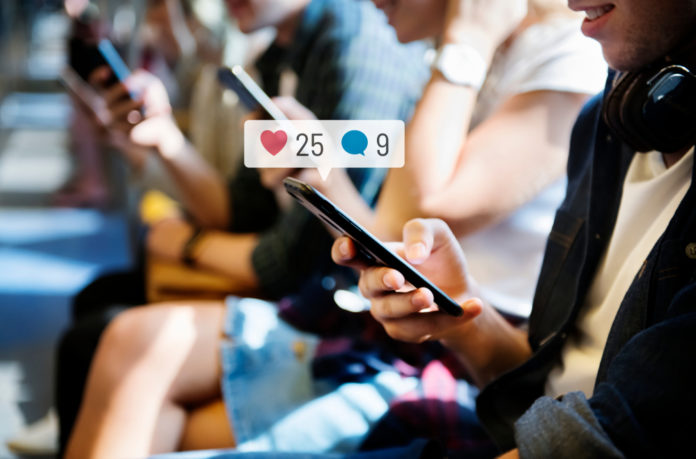Social media platforms have been catering to the human desire for self-expression and individuality since their inception, and in only a few short years, they have evolved alongside increasing demand.
In the past, it took a lot more time and effort to achieve what you can do now with only a few clicks. Youtube and Instagram, for example, were made for an environment where a successful user is expected to possess specific expertise, present high-quality imagery, and often follow the existing trends. Then Snapchat entered the market, and filters such as the infamous dog ears gained in popularity due to its simplicity and fast adoption amongst celebrities. With the plug-and-play effects so readily available the expectation for creativity was placed on the back burner, but we have since seen that desire for artistic expression return.
Similar to the dog filter, people generally long for content that feels alive and imperfect, but also inventive. For a while, it has been less about the conventional attractiveness of the face or its presentation, and more about unexpected references or unseen structure; like when a groundbreaking movement of critical history presented through memes, carved a whole niche for itself.
Calling oneself a “creator” has recently become a namesake among Gen Zers—and creators, thanks to image processing apps, offer tools for users to touch up what they have on hand. With these, young people are not prescribed what to do, just given instruments to express themselves.
Nowadays, imaging process apps and other companies are geared at content creators keeping their eyes on what’s in and what’s out with various trends. Among other ways of assessment, companies use market monitoring systems that provide access to syndicated research. These systems yield wide opportunities for automating research, which in its quickness, allows companies to register (and react) to every emerging trend.
The following are the top 3 most popular photo and video effects trends that are expected to take the summer by storm:
NOSTALGIA, ULTRA
Millennials are often nostalgic for their youth and childhood, seemingly longing for its sense of freedom, discovery, innocence or immediacy. Gen Zers, on the other hand, appear to be fascinated with the technologies that became obsolete or the ones that are doing so in real time. In the edge of the sterile vastness of 8K displays, glitches, noise, and static can be equated to surreal mythological creatures that need to be summoned—say, with the help of the VHS-like filter. The aged film effects on photos do not show signs of losing steam either.
Elsewhere outside of social media, this “pre-internet” nostalgia is fleshing out in streaming world trends: the old network favorites like The Office, Grey’s Anatomy and Criminal Minds have been scoring top spots in the US viewership stats, accounting for more viewing time than any other show or movie on streaming platforms.
TRIBUTES TO POP CULTURE
Paying homage to an artwork with shot-for-shot reproduction has always been a notable culture phenomenon of its own. Among the latest examples is the Izoizolyatsia community on Facebook where people appropriated famous fine art pieces with at-home photos staged to replicate a painting.
The Album Cover Challenge that has grown on TikTok by summer 2021 takes the subversion to another level, with creators responding to everyday life situations with a statement taken from a song title and a video of recreating (often in an unexpected manner) its album cover. Photo editing software like Prequel lends a hand here, dropping a set of templates based on popular albums by Madonna, Harry Styles, or Ramones. Covers of the Vogue magazine, the uber-hyped CyberPunk game, and even the classic movie Casablanca are among other inspirations for effects that facilitate making a tribute to your favorites. Another editing app, Unfold, features presets to create fictional magazine covers and boasts a standout collection of ones that turn user content into Art Deco-style Tarot cards.
ROUTINE ELEVATED
“Vibe” is a difficult word to put a definition on but it’s what creators get when applying the filters like Miami or Mojave that just add a bit of glow or style to convey a feel that instantly registers with viewers. That helps elevate even the most ordinary visual and makes every selfie stir dormant wanderlust in the followers. The effect called Cinema is shooting for turning your footage into, well, a movie. With it, rapper Megan Thee Stallion made an event out of her video-selfie.
Some people take on the task to sexify arguably the most routine experience ever, the mornings, and literally make them shine brighter. Photographs of early sunshine radiating into rooms and portraits next to windows, coffee mug in hand, instantly reach hygge catalog grade when adjusted with over exposition. Any photo editing app works for eliminating background shadows and dialing up the highlights to bring out the whites, creating a color palette equating the picture to influencer material.
Nostalgia, pop culture tributes, and elevated routine might seem familiar but it’s the unprecedented wave of creativity, fueled by a baggage of lockdown-adjacent content fatigue and catalyzed by the editing apps latest developments, that makes us excited about what we’re going to see this summer.
Founded in 2018 by Timur Khabirov and Serge Aliseenko, in a few short years Prequel has been able to position itself as one of the Top 10 photo and video editing apps in the U.S. With more than 60 million users and an average of 2 million Prequels made a day through social platforms like TikTok and Instagram, Prequel appeals to a wide array of creators including influencers, brands, and celebrities such as Selena Gomez, Bella Hadid, Billie Eilish and Rihanna.
Timur Khabirov, entrepreneur, co-founder and CEO Prequel
Social media stock image by Rawpixel.com/Shutterstock







